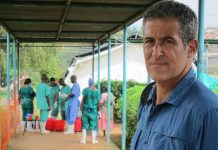
The possibilities of a second wave of coronavirus are "very real," according to the chief scientist of the World Health Organization on Tuesday.
Dr. Soumya Swaminathan said that while strict health measures were able to slow the transmission of the coronavirus, its resurgence is possible as economies reopen.
“We don’t know if it will be a second wave, a second peak or a continuing first wave in some countries, it (the infection rate) really hasn’t come down that much at the time of reopening and so all of these possibilities are very real,” she said on CNBC’s “Street Signs Asia.”
She explained that a second wave of infection is “a very real risk” as the virus does not simply disappear. Social distancing and lockdowns have helped curb the spread of the disease because people had to stay apart.
“Now, the moment you start having that mixing again, there’s every chance that the transmission could restart — unless it’s gone down to such a low level in a place where it’s very, very rare to have the infection in the community,” she said.
She emphasized the importance of a cautious and “staggered” reopening of economies. She added that governments must observe the virus’ behavior as more people start to interact with one another again.
“What we’ve been saying repeatedly is that we cannot be complacent, this virus is a nasty virus and what it needs is people to be in close contact,” Swaminathan said.
“So especially in many countries around the world, where it is impossible to have physical distancing, it is really important that people remain vigilant.”
Moreover, she said that those who are more vulnerable may get sicker if the virus hits them. These vulnerable are the elderly, people with weak immune systems, and those with illnesses, like high blood pressure and diabetes.
People should observe precautions, such as not going to crowded areas, wearing a medical mask whenever they go outside, and making sure their diseases are “under control,” she said.
Data from Johns Hopkins University showed that over 7 million people globally have been infected with Covid-19 and led to the deaths of 400,000 people.
Asymptomatic cases
Swaminathan pointed out that the public must not rule out asymptomatic cases of transmission even if they do not appear like they are the ones spreading the virus.
“Even though we do know that there are a number of people with infections in the community — who are either completely asymptomatic or who have very mild symptoms — they do not seem to be the ones who are spreading the infection," she said.
According to the United Nations health agency, cases of asymptomatic people spreading the coronavirus are “very rare.” However, the organization later walked back on its statement, emphasizing that much about asymptomatic spread was still unknown.
Meanwhile, Dr. Mike Ryan, executive director of the WHO’s emergencies program, said that while asymptomatic spread of the virus does exist, the portion of asymptomatic individuals who transmit the virus to others remains a “big open question.”






